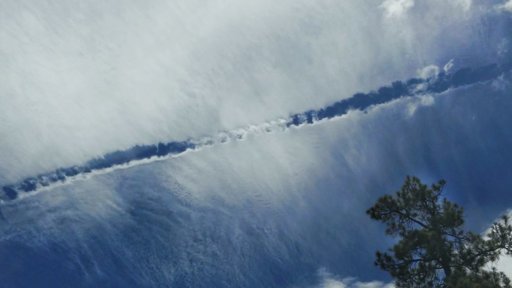Content from external source There is some debate regarding the mechanism behind the formation of a distrail.
One possible explanation is that the engine exhaust gasses, emitted by an aircraft flying through a thin veil of high level cloud such as
Cirrus, warm the air causing the ice crystals in the cloud to turn to vapour and disappear, creating a clear passage behind the aircraft.
An alternative explanation is that when an aircraft flies through a super cooled cloud, this cloud freezes due to the disturbing airflow created by the aircraft, as well as by the addition of plenty of freezing nuclei due to the aircraft's exhaust gases. Some of the particles act as the nuclei onto which the droplets can start freezing. As the ice-crystals form, they grow in size and fall below, this is sometimes observed as fall streak clouds below the actual distrait, or they evaporate instantaneously when entering the lower layers.

